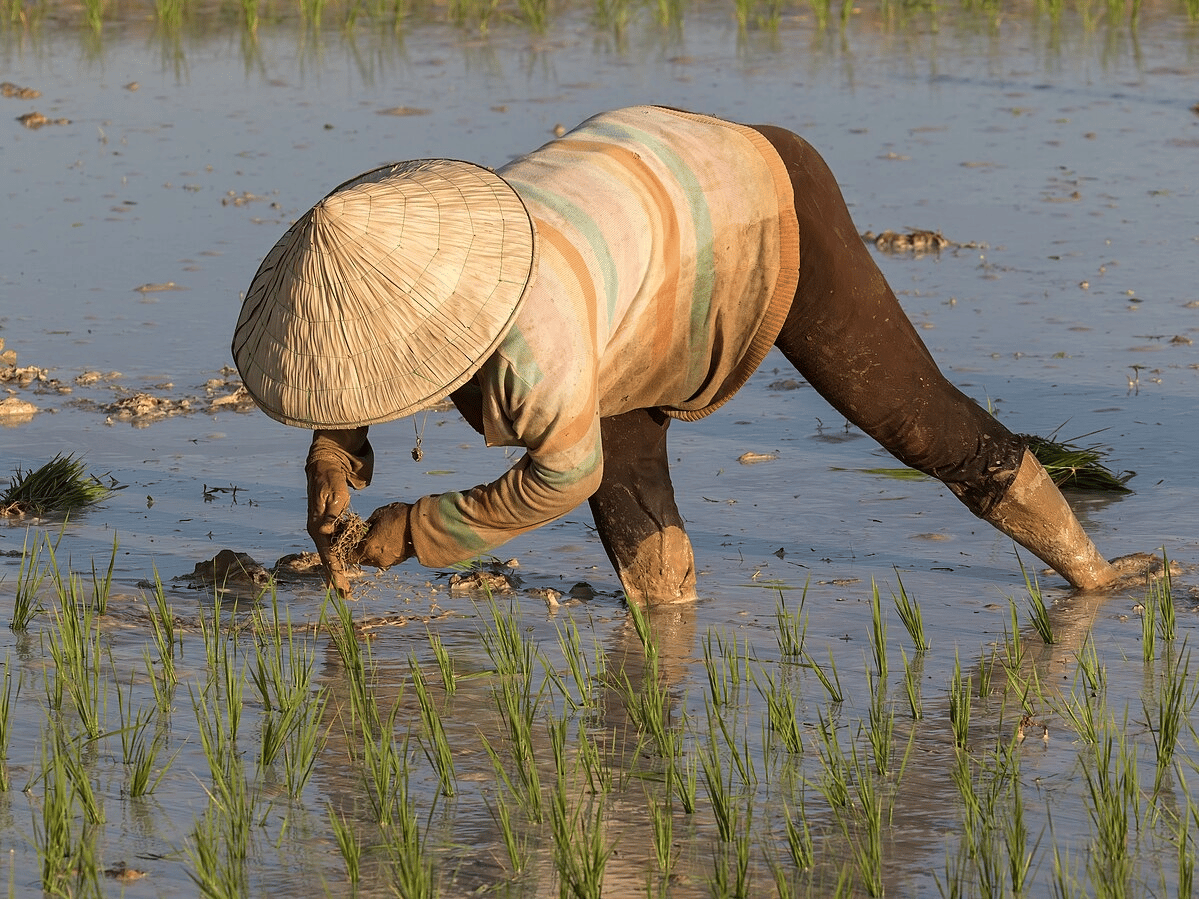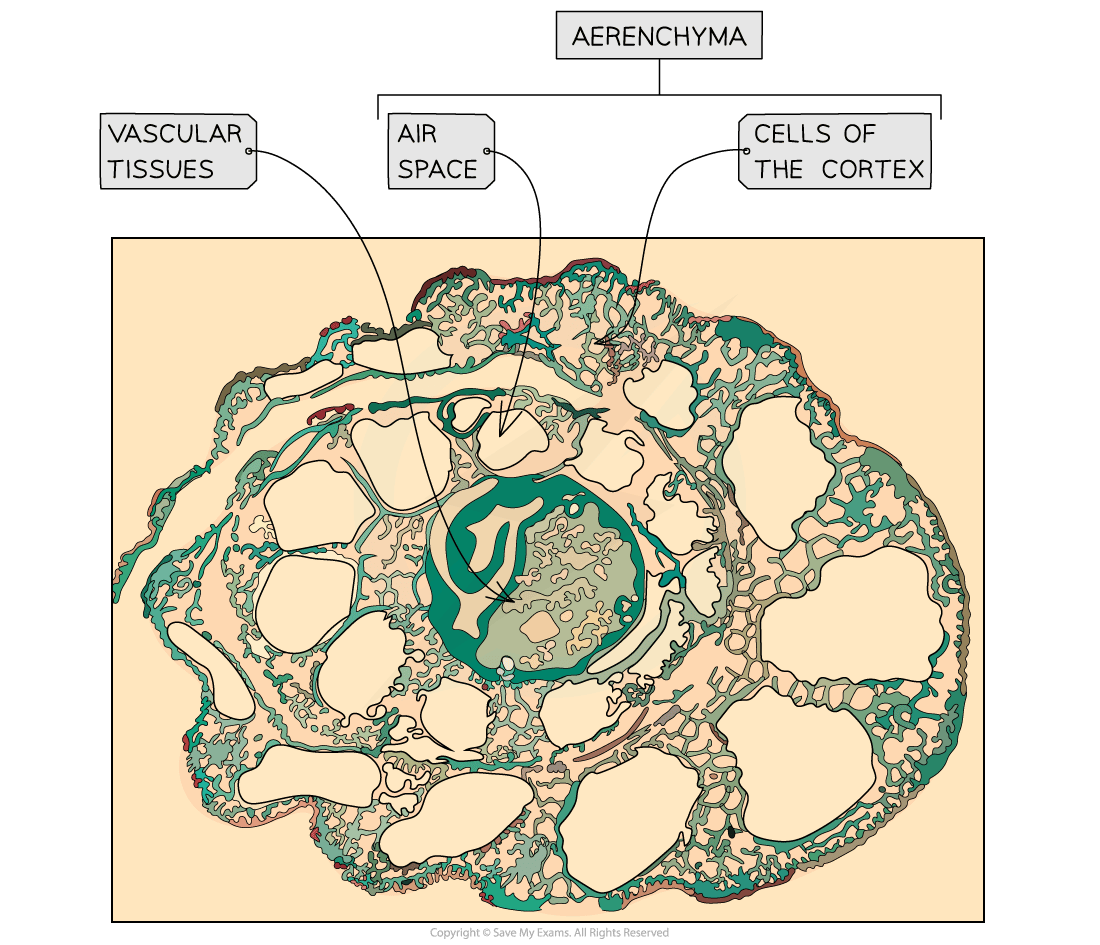Anaerobic Adaptation of Rice (Cambridge (CIE) A Level Biology): Revision Note
Exam code: 9700
Anaerobic adaptations of rice
Flooding is a major problem when growing crops
As the water rises and covers the different parts of a plant it can create problems:
Plant roots don’t get the oxygen they need for aerobic respiration
Plant leaves don’t get the carbon dioxide they need for photosynthesis
These gases are less readily available in water as they diffuse more slowly in liquid compared to air
Rice plants possess several adaptations that enable them to survive and grow in waterlogged conditions

Adaptations for aerobic respiration
Some types of rice show an increased rate of upward growth away from the waterline
The leaves always remain above water so there is access to oxygen and carbon dioxide through the stomata
Rice plants possess aerenchyma tissue in the stems and roots
This specialised plant tissue contains useful air spaces that allow gases that enter the stomata to diffuse to other parts of the plant that are above and under the water
Oxygen and carbon dioxide can therefore be held in this tissue even when underwater and can be transferred from parts of the plant that have access to air
Adaptations for anaerobic respiration
When there isn’t enough energy being supplied to the cells by aerobic respiration, plants resort to anaerobic respiration as a source of ATP
Plants use ethanol fermentation during anaerobic respiration
Toxic ethanol is produced which can build up in the plant tissue causing damage
Rice plants can tolerate higher levels of toxic ethanol compared to other plants
They also produce more ethanol dehydrogenase
This is the enzyme that breaks down ethanol
The resilience that rice plants have towards ethanol allows them to carry out anaerobic respiration for longer so enough ATP is produced for the plant to survive and actively grow

Examiner Tips and Tricks
You might be wondering why farmers would grow rice in paddies (intentionally flooded fields). Growing rice in these conditions actually increases the yield. The plants or weeds that would usually be competitors for nutrients and light are unable to survive in these conditions and so the rice has more resources for its growth. Farmers are effectively removing selection pressures from the growing areas by flooding them.

Unlock more, it's free!
Did this page help you?